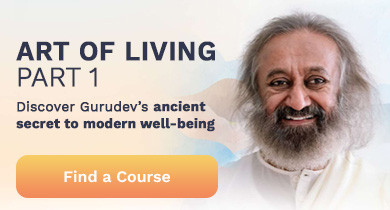By Elizabeth Herman | Posted : September 14, 2020
Why are so many people paying attention to yoga, meditation, and regular pranayama breathing exercises for ways to improve their health? According to research, the yogic form of breathwork pranayama reduces stress and high blood pressure, improves sleep, decreases tobacco cravings, and makes the respiratory and nervous systems work more efficiently.
Beginning to learn to breathe for optimal health is easy. With some basic background information and a few simple ways to get started, you can experience a balance between relaxation and alertness that will help make your work more productive and your home life more harmonious.
What is pranayama breathing?
Pranayama comes from the ancient yogic wisdom tradition and consists of many specific techniques to use your breath for various positive purposes, including taking in more oxygen and removing toxins from the body.
Meditation and yoga have been handed down since ancient times in India. Together, the practices offer human beings effective ways to find peace, happiness, and harmony with others.
A breathing technique used in conjunction with meditative techniques and/or yoga postures, also known by the Sanskrit word pranayam, forms an important part of the proper practice of the physical, mental, spiritual, and emotional discipline that all make up the totality of yoga.
Prana, the first part of the word pranayama, refers to the universal life force. Ayama means to control. So in practicing pranayama, we keep our energy level high and continuously flowing for the sake of our own calmness, productivity, and enthusiasm.
The American Institute of Stress identifies breathing as a “Super Stress Buster” that will activate the natural relaxation response, a term coined by Dr. Herbert Benson, a founding trustee. Instead of the stress response that moves the same health indicators in the opposite way, the relaxation response decreases heart rate, blood pressure, muscle tension, and pace of breathing.
The purpose of pranayama breath
A breathing pattern can produce a particular effect in the body and mind. In keeping with this holistic process, founder of Art of Living Gurudev Sri Sri Ravi Shankar says, “For every emotion, there’s a particular rhythm of the breath. While you cannot directly harness your emotions, with the help of breath you can do that.”
Pranayama supports the functioning of that part of the nervous system which rejuvenates our body, known as the parasympathetic nervous system. It especially stimulates the vagus nerve, as do other yogic practices and meditation, to radiate calm throughout the body.
The pranayama practice helps to move us out of the fight or flight response and gets us out of survival mode and into resilience. When we inhale, we bring oxygen and energy into our being. This energizes our mind and emotions. When we exhale, we relax the mind-body complex.
With conscious breathing, the focus stays within, and healing power is released automatically, during meditation and at other times. So balancing the processes of energizing and relaxing is one purpose of practicing a breathing exercise.
How to practice any pranayama technique
Any pranayama breathing technique or meditation practice works best when you do it on an empty stomach. By practicing these regularly, you can begin to feel energy boosts as you start your day. Automatically, you’ll readily use breathing throughout your day as needed for calming relaxation until bedtime.
You can begin a pranayama practice through a simple, daily pranayama exercise of deep yogic breathing, alternate nostril breathing, and/or ujjayi breath as described below. Breath is the only system of the autonomic nervous system that is involuntary and can also be controlled consciously.
So if you choose to control your breath, you can control your mind and emotions, which then positively influence your cardiovascular health and other processes in your body.
Combining the following techniques with free, online, guided meditations from Art of Living can give you a great start toward having a regular practice.
Effective breathing exercises for beginners
1. Deep breathing can also be called diaphragmatic, abdominal, or yogic breathing. It engages the major abdominal muscle, the diaphragm, which spans the abdomen from side to side and helps move the lungs and other organs automatically for normal breathing. In this pranayama exercise, we expand all the abdominal muscles to bring in as much air as we can when we inhale. We then contract them to expel as much air as we can when we exhale. When we expand and contract the diaphragm especially, our belly expands and contracts.
Benefits of deep breathing include:
Having attention to your breathing helps you stop thinking about your worries.
Each deep breath supports and purifies your physical and mental functions, including meditation.
Going beyond chest breathing makes the breath more effective overall because it increases your lung capacity, making vigorous exercise less of a strain on your system.
2. Alternate nostril breathing (Nadi Shodhan) involves breathing through one nostril at a time. To practice this, sit still with your spine erect, shoulders relaxed, eyes closed. Place your right thumb on your right nostril, forefinger, and middle finger between the eyebrows and ring finger on the left nostril. Gently close your right nostril. Breathe out from the left nostril and in through the left nostril. Close the left nostril, open the right nostril, and breathe out from the right. Now breathe in from the right, close the right, open the left nostril and breathe out from the left. Continue this for five minutes. Make sure that your breaths are easy and natural.
Benefits of alternate nostril breathing include:
You relax with a calm and centered mind, the left and right sides of the brain in harmony.
You experience greater clarity of thought and concentration.
Restored balancing occurs between the sympathetic and parasympathetic nervous systems.
Clear nasal passages result, with an extra supply of oxygen on a physical level.
Increased vitality and lower levels of stress and anxiety support your natural healing abilities.
3. Ujjayi breathing (also called victory breath) happens when you inhale through the nose but send your breath through the back of your throat. This produces a vibration that sounds similar to ocean waves. It helps to relax muscles and deepen stretches. By repeating about 10 times while lying in bed at night, you can drift away to sleep more easily, and leave the stress of the day behind. You can practice ujjayi breath at any time of the day or night. Beginning to advanced yoga practitioners find this so helpful for soothing stretched muscles and tense minds.
Benefits of ujjayi include:
A deeper yogic spiritual practice.
A stronger immune system.
Higher levels of mental calm, focus, and clarity.
Control over high blood pressure.
Better singing voice quality.
There are many other breathing and meditation techniques that your yoga or meditation teacher can share with you. Improving your life can be as simple as inhalation and exhalation when done with awareness.
A free Breath & Meditation Online Session With a Live Instructor, can help you start to practice pranayama breathing and bring you freedom from stress. It’s the workshop you need to gain access to instructions for the powerful SKY Breath Meditation.
By Elizabeth Herman - PhD in English, with concentrations in Rhetoric and Composition, and Literature, she offers writing support to clients, teaches locally, lives in Boone, NC, and volunteers for a better world.



























